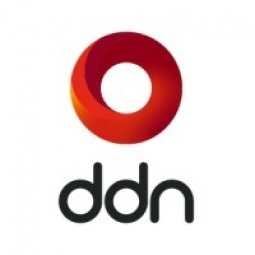Download PDF
Accelerate: Media Broadcast
Technology Category
- Infrastructure as a Service (IaaS) - Cloud Storage Services
Applicable Industries
- Telecommunications
Applicable Functions
- Discrete Manufacturing
Use Cases
- Digital Twin
Services
- Cloud Planning, Design & Implementation Services
The Challenge
Maple Leaf Sports & Entertainment (MLSE) wanted to create a central media repository to store and archive all of its digital broadcasting workflow, from production and ingest through editing, post-production and play-out. The storage system needed to support a wide variety of devices and software packages, including ingest devices, editing stations running Apple Final Cut Pro and Avid, as well as play-out servers from Harris. The solution also needed to integrate with a Digital Asset Management (DAM) solution which would be implemented during the second phase of the project. The solution not only needed to enable full connectivity and content sharing between heterogeneous systems, but allow them to work simultaneously, at full speed, without dropping frames or causing delays.
About The Customer
Maple Leaf Sports & Entertainment (MLSE) is the owner and operator of the Toronto Maple Leafs NHL team, the Toronto Raptors NBA team, the Toronto FC MLS team, the Toronto Marlies AHL team and Leafs TV, Raptors NBA TV, as well as the Air Canada Centre, home to both the Maple Leafs and Raptors. MLSE operates three television channels, two in SD and the third in HD, and has a fourth going live later this year, which will be a hybrid SD/HD channel. The broadcasting workflow at MLSE includes 10 editing bays running Apple Final Cut Pro and Avid and Harris Nexio servers for play-out. The DDN storage solution serves as the central storage repository for all video and audio content such as game footage and interviews, as well as all graphics and content created for the sporting arena’s jumbotron and digital signage.
The Solution
MLSE implemented a DDN file storage system, a high-performance, high-capacity storage solution, enabling real-time workflows and long-term content archiving. The DDN storage solution serves as the central storage repository for all video and audio content such as game footage and interviews, as well as all graphics and content created for the sporting arena’s jumbotron and digital signage. DDN enables MLSE to connect all of their broadcast workflow elements into a single, consolidated storage system, virtually eliminating the need to copy or transcode content, only to get it from one system into another. Having all the content in one place has dramatically improved efficiencies for the editors and creative workers since all content is available immediately, all in one single namespace.
Operational Impact
Quantitative Benefit
Related Case Studies.

Case Study
Vodafone Hosted On AWS
Vodafone found that traffic for the applications peak during the four-month period when the international cricket season is at its height in Australia. During the 2011/2012 cricket season, 700,000 consumers downloaded the Cricket Live Australia application. Vodafone needed to be able to meet customer demand, but didn’t want to invest in additional resources that would be underutilized during cricket’s off-season.

Case Study
SKT, Construction of Smart Office Environment
SK T-Tower is the headquarters of SK Telecom. Inside the building, different types of mobile devices, such as laptops, smartphones and tablets, are in use, and with the increase in WLAN traffic and the use of quality multimedia data, the volume of wireless data sees an explosive growth. Users want limitless Internet access in various places in addition to designated areas.









